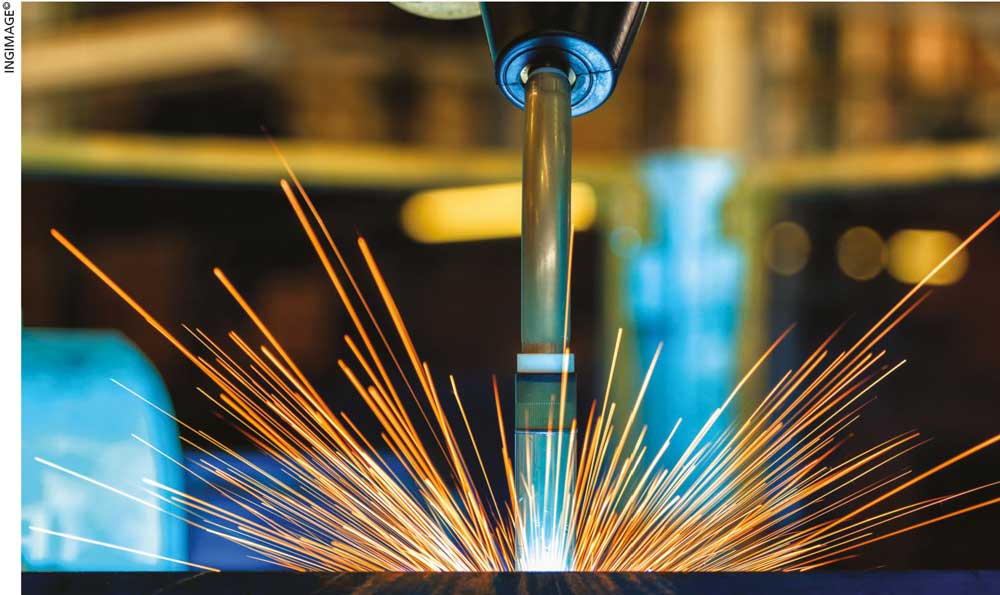WORKFORCE UPSKILLING

AUTOMATION RULES THE ROOST
Workplace automation is key – Dr. Jeffrey Pfeffer and Dr. Muneer Muhamed

Automation is poised to influence the way we work and how the job market functions. Loss of employment is unavoidable and imminent but how many jobs will be lost to automation is debatable.
A recent OECD report suggests that as much as 40 percent of jobs are at risk due to automation – depending on the region. However, the World Economic Forum (WEF) claims that robots will displace 75 million jobs globally by the end of this year but create 133 million new ones.
Trends in training by state entities and the private sector are inadequate to cope with labour market dislocations. Attention will need to be paid to helping the employed to avoid economic and political catastrophes.
In most organisations, a training budget is discretionary and the last two years have seen drastic cuts. Prior to the pandemic, training was less than optimal with no connection to strategic goals. If training is going to help with the transition to a more automated workplace, such longstanding trends will need to change.
As governments try to mitigate the effects of jobs lost due to the pandemic, the impact of dislocated workers will hit them harder. Public policy should seek to mute harmful economic effects of automation through training and other policies – otherwise, people will rationally seek to curtail automation.
In Sri Lanka, added restrictions on foreign exchange will slow down the upskilling process with global experts.
It’s time the government and private sector embrace the issue of human sustainability, as well as stewardship of the work environment, with much of the same vigour that many have espoused environmental sustainability and become good stewards of the physical environment – and for many of the same reasons.
For instance, there are the benefits of branding. Similar to businesses touting their physical environmental bona fides today, they may need to showcase their human sustainability accomplishments in the future.
Over the past few decades, the relationship between organisations and their employees has become much more transactional. That will need to change if businesses are to embrace the task of preparing their people for impending workplace transitions and dislocations.
Multi-year careers in organisations have transitioned to stints of shorter durations and jobs have more recently become gigs. With limited attachment between employers and employees, neither party has an interest in investing in relationships.
Perhaps this explains why training has declined and is lower here than in countries that have less flexible labour markets, and longer-term connections between workers and their employers.
If employers don’t accept some responsibility for helping their teams adjust to a world with more automation and AI, it is quite likely that they will confront some combination of legislation, regulation and litigation.
This is precisely what happened in the case of the environment where an ecological movement had laws passed to stop pollution, regulations were implemented to limit dumping and litigation confronted entities that didn’t comply with environmental requirements.
Social pollution is a problem today as much as environmental degradation was in the past. Businesses will have to voluntarily reduce the economic and social harm they are causing – or they’ll be forced to comply.
The sad part is that in public, many top executives wring their hands over the negative consequences that artificial intelligence and automation could have for workers. Yet, these folks tell a different story in private. They’re racing to automate their enterprises with little regard for its impact on workers.
This disregard for the effects of organisational decisions on employees is not likely to be a viable long-term strategy.
Governments around the world that are confronting both fiscal deficits and growing unemployment, which require more public expenditure, are unlikely to let employers derive the benefits of automation and AI, and pass the costs of worker dislocation onto society.
Enterprises need to understand their responsibilities not only to shareholders but their employees and communities too.
Businesses face the problem of collective action – few organisations want to be the only ones to provide training while others ride free on those efforts. Therefore, it may fall on industry associations, and other organisations such as chambers of commerce and industry, as well as the HRD network, to promote and possibly enforce guidelines for retraining and upskilling staff.
It is almost impossible to predict what will happen as automation and AI increasingly penetrate workplaces; but it will not be possible for companies or governments to simply continue on the same path as before.
Labour market transformations and their economic consequences are far too serious to believe that continuing a relatively laissez-faire approach will be politically or economically viable.





Very valid points. Lovely article.